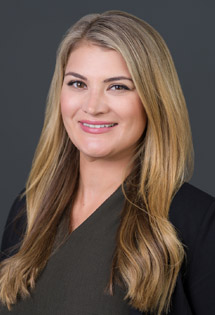

Will The U.S. Budget, Budge? – The History and Future of the Federal Deficit
Andrea Taylor, CPA, MSA Wealth Management Advisor | Aubrey Brown, CFP®, EA, M.S. Wealth Management Advisor | Thursday, April 24, 2025
For many investors, the federal deficit represents an intangible, distant issue that reflects more about Washington politics than personal finance. As wealth managers, we know the size and trajectory of the U.S. deficit can influence market conditions, interest rates, and ultimately our client’s long-term financial plans. As we help clients plan for retirement, manage portfolios, […]
Read More

Navigating Tax Implications When Selling Real Estate: Strategies for Homeowners and Investors
Marty Rascon, Wealth Management Associate Advisor | Ryan Richardson, CFP®, ChFC®, Senior Wealth Management Advisor | Thursday, February 20, 2025
Investing in real estate ranks among the most significant financial decisions most individuals will make in their lifetime. Whether investing in a primary residence or an investment property, there are several critical factors that must be considered. Selling a property, especially one held for a long time or a property that has significantly appreciated in value […]
Read More

Setting Yourself Up for Success in 2025
Stone Churby, M.S. Wealth Management Associate | Kelli Burger, CFP® Wealth Management Advisor, Partner | Thursday, January 23, 2025
After a historic 2024, the New Year provides an opportunity for people to check in with themselves about their personal and financial goals. Life events, career changes, and a new administration may create fresh opportunities for financial planning for you and your family. As we step into 2025, the financial landscape continues to evolve; shaped […]
Read More

Giving and Gravy
Aubrey Brown, CFP®, EA, M.S. Wealth Management Advisor | Brooke Boone Kelly, CFP®, MACC, Wealth Management Advisor, Partner | Thursday, November 21, 2024
November brings colder weather, fantastic food and attention to GIVING. While the centerpiece at the Thanksgiving table may be a gravy dish, the conversations around the table may focus on Giving. Giving can be categorized in three main areas. When it comes to giving assets, there are several ways to give in a tax advantaged […]
Read More

The World & WAM: 30 Years in Review
Carolyn Taylor, President & Founding Partner | Yoshi Brownlee, Marketing & Communications Advisor | Wednesday, October 30, 2024
Weatherly Asset Management was established in October of 1994 as an independent investment advisor focused on wealth management. Looking back, the world as we knew it in the Fall of 1994 is nearly unrecognizable. In the 30 years since Weatherly was founded, we have seen the meteoric rise of the internet, adapted to 5 different […]
Read More



